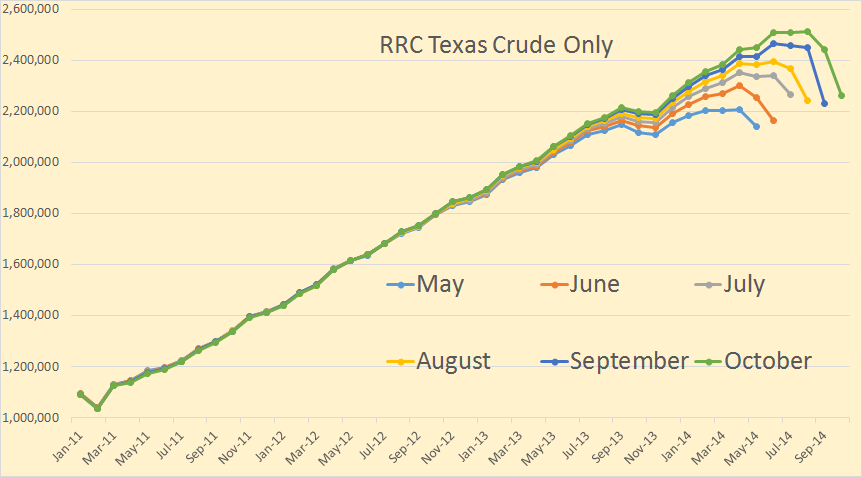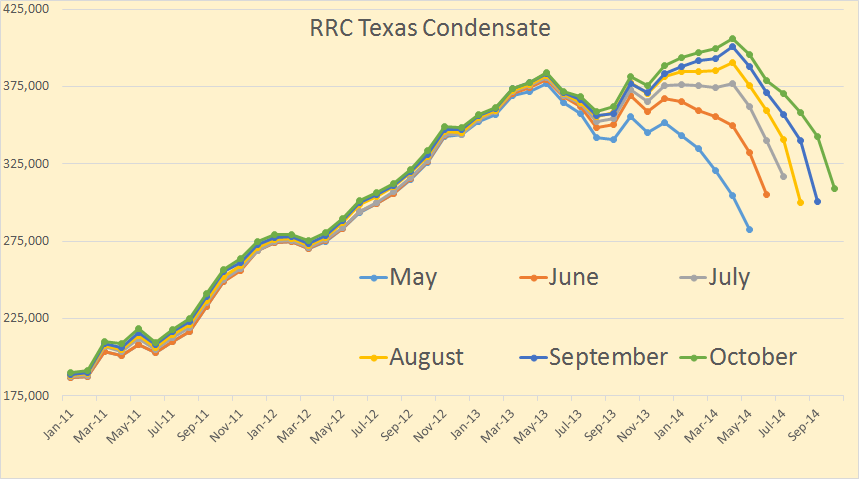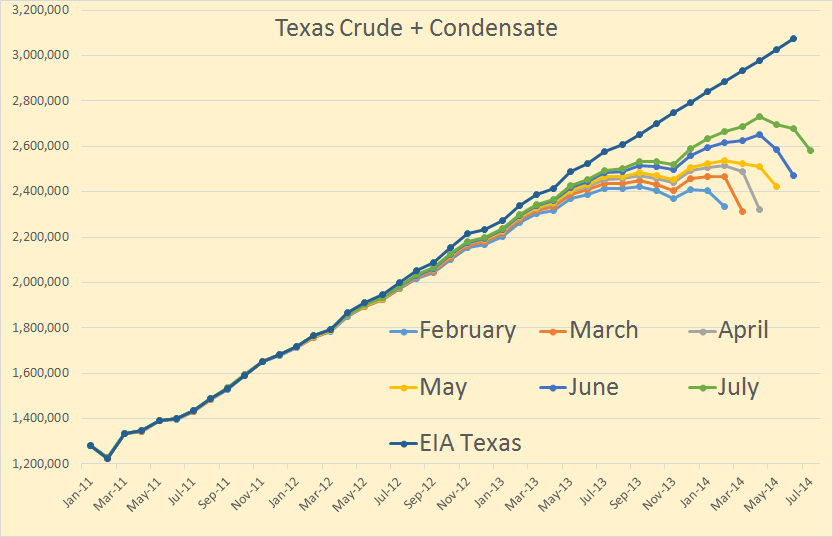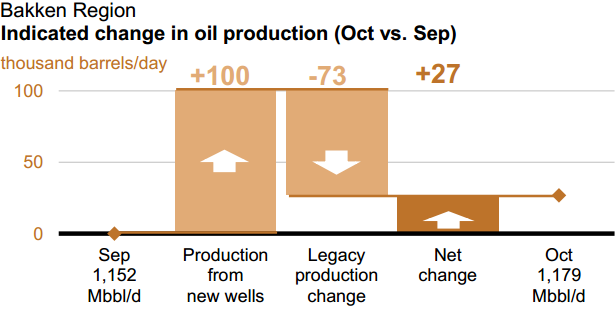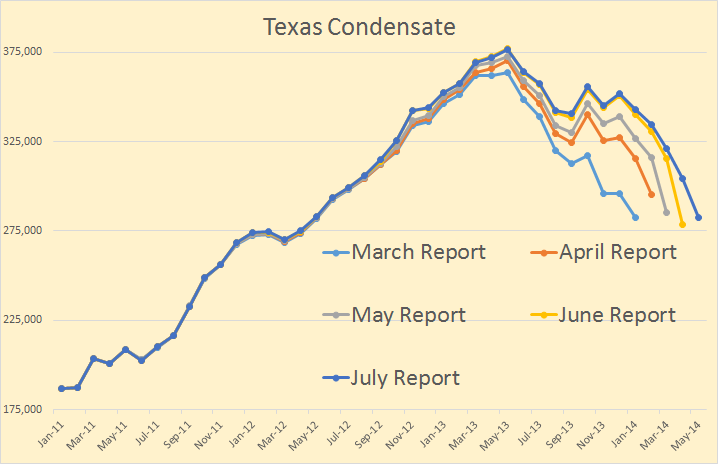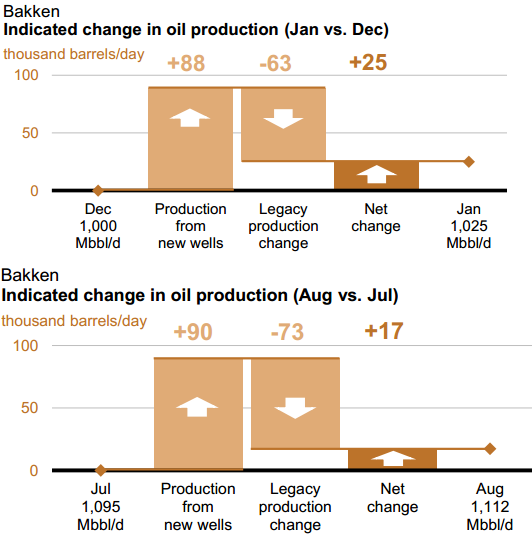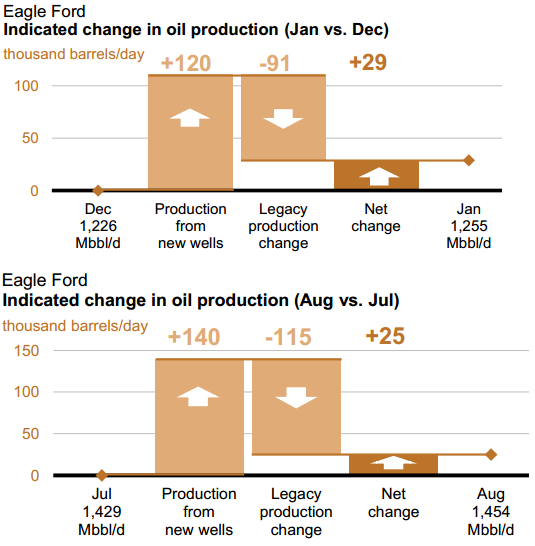The Texas Railroad Comission has updated their Oil & Gas Production Data Query to include the production numbers for October. The Texas data is always incomplete so the charts all look like there is a big decline in the last few months. This is not the case, the charts only reflect the data that has been received and the production numbers will look a lot more positive after several months.
That being said there is something that can be gleaned from these numbers. Even though the data is incomplete, if production is increasing then last months incomplete numbers should be higher than this months incomplete numbers. Using that logic, there seems to have been a strong slowdown in Texas oil and gas production.
All the last data points are October and is in barrels per day.
In June and July there was a strong increase in production reported to the Tesas RRC by the oil companies. But in August, September and October things slowed down considerably.
Texas condensate production has slowed down a lot more than crude. Most Texas condensate comes from their natural gas wells but there are a some wells in the Eagle Ford that produces mostly just condensate.
Read More
